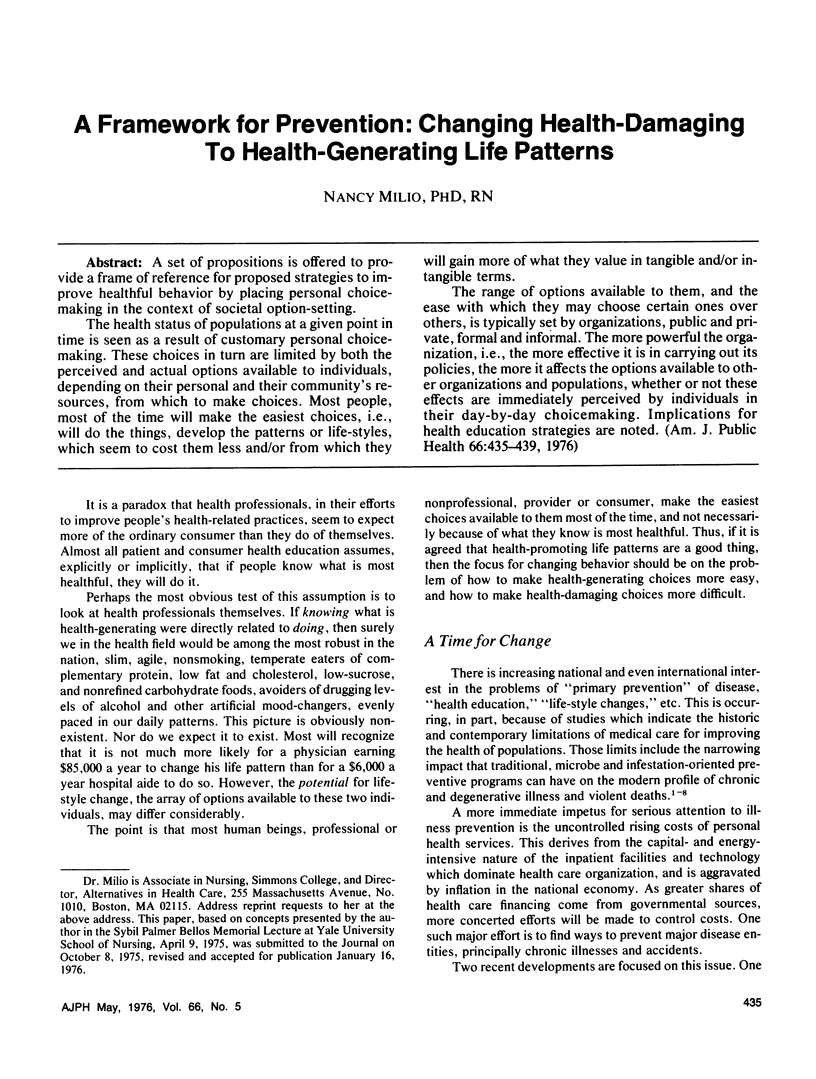Abstract
A set of propositions is offered to provide a frame of reference for proposed strategies to improve healthful behavior by placing personal choice-making in the context of societal option-setting. The health status of populations at a given point in time is seen as a result of customary personal choice-making. These choices in turn are limited by both the perceived and actual options available to individuals, depending on their personal and their community's resources, from which to make choices. Most people, most of the time will make the easiest choices, i.e., will do the things, develop the patterns or life-styles, which seem to cost them less and/or from which they will gain more of what they value in tangible and/or intangible terms.
Full text
PDF




Selected References
These references are in PubMed. This may not be the complete list of references from this article.
- Coburn D., Pope C. R. Socioeconomic status and preventive health behavior. J Health Soc Behav. 1974 Jun;15(2):67–78. [PubMed] [Google Scholar]
- Freymann J. G. Medicine's great schism: prevention vs. cure: an historical interpretation. Med Care. 1975 Jul;13(7):525–536. doi: 10.1097/00005650-197507000-00001. [DOI] [PubMed] [Google Scholar]
- McKeown T., Brown R. G., Record R. G. An interpretation of the modern rise of population in Europe. Popul Stud (Camb) 1972 Nov;26(3):345–382. [PubMed] [Google Scholar]
- Steele J. L., McBroom W. H. Conceptual and empirical dimensions of health behavior. J Health Soc Behav. 1972 Dec;13(4):382–392. [PubMed] [Google Scholar]
- Waldron I., Eyer J. Socioeconomic causes of the recent rise in death rates for 15-24-yr-olds. Soc Sci Med. 1975 Jul;9(7):383–396. doi: 10.1016/0037-7856(75)90139-0. [DOI] [PubMed] [Google Scholar]


